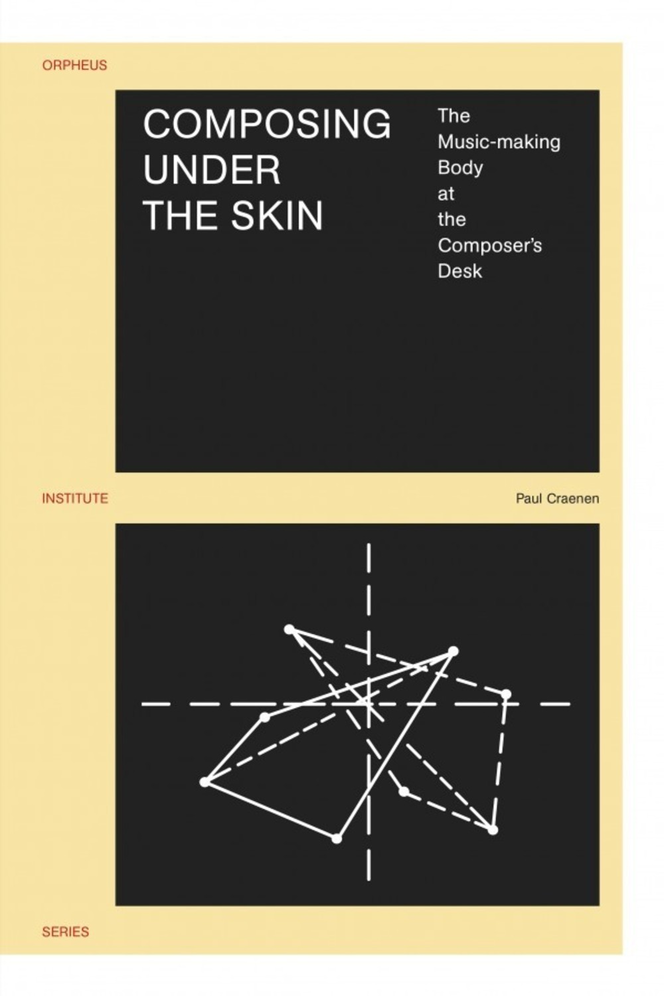Paul Craenen
Dissertation at the Leiden University Repository:
Gecomponeerde uitvoerders : het musicerende lichaam vanuit compositorisch perspectief
Tubes (2007)
a feedback performance for two performers, pvc-pipes, joints and digital processing.
Feedback is generated between two microphones and loudspeakers standing opposite to each other. Two performers use their bodies, pvc-pipes and joints to manipulate the sound. The feedback signal is digitally processed according to its amplitude. The processing is of a static nature: no virtual sound sources are used and there is no automation of musical time. Thus, all sound changes can be traced back to the actions of the performers.
The performance is composed of seven consecutive parts. In every part, a specific sound potential or playing technique is explored. In the first movement, a high-pitched feedback signal is generated or interrupted by mere body positioning between the microphones and loudspeakers. In the second movement, the pvc-pipes are used to generate innate resonances and to influence the amplitude of the feedback signal. The pipes become instruments for musical improvisation in the fourth movement. In the next movement, each performer telescopes two pipes of different sizes in a kind of trombone playing. At full length, the connection of the two pipes bridges exactly the distance between the loudspeaker and the microphone. This creates new feedback possibilities that are fully explored in the last movements, when all pipes get connected by joints to become one installation with very low innate resonances.
During the creation process of tubes, special attention was paid to the status of the performing bodies. The performers’ identity oscillates between the identity of a dancer executing choreographic movements in a disciplined way, the identity of a musician playing the tubes in a close interaction with what he/she hears, and the identity of a technician testing out sound possibilities and constructing a feedback instrument.
The Well-prepared Piano (2009)
The title of this collection of short piano etudes refers to two definitive works in the keyboard literature based on two almost completely opposite concepts. Johann Sebastian Bach’s Das Wohltemperierte Klavier (1722) is based on a ‘well-tempered’ tuning, which allowed music to be played on the same instrument in all twenty-four keys. Although this was not yet the so-called ‘equal’ temperament, it started the trend towards a ‘neutral’ approach to the keyboard instrument: intervals and melodies could be transposed without losing the qualities of the original key. Two centuries after Das Wohltemperierte Klavier, John Cage came on the scene with his ‘prepared piano’ (Bacchanale, 1938). The effect of his preparations is a dismantling of the ‘neutral’ piano ideal: depending on the preparation, each key of the piano is given a unique and almost untransposable sound identity. In my Das Wohlpreparierte Klavier I, the use of electronic sound techniques combines elements from both approaches. The piano keyboard is played in a conventional way, but in each etude, digital processing is added to the sound using microphones. The etudes are divided into series, each of which focuses on one type of processing. These sonic adaptations are not conceived of as extensions that can be turned on and off at a whim, but as obstacles challenging creativity that come before the compositions. Therefore I prefer to use the description ‘electronic preparation’ to the overused ‘live electronics’. The first series of etudes is dominated by one of the oldest sound-synthesis techniques: the ring modulation. A double ring modulation transforms the keyboard into a highly unequal tonal area with clearly distinguishable registers. This sonic heterogeneity is explored in short etudes, each of which highlights one kind of movement. Pulse, continual microvariation and speed are the most conspicuous ingredients. Das Wohlpreparierte Klavier I was commissioned by TRANSIT 2009, where it was premiered by Frederik Croene on 24 October.
